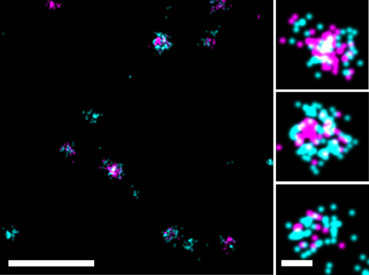Content #1
Content #1
Content #1
Triple-negative breast cancer (TNBC) is an aggressive cancer type with no specific therapeutic targets, leaving chemotherapy as the primary treatment option. However, chemotherapy is often highly toxic for patients with limited effectiveness, underscoring the need for new therapeutic strategies. Researchers are examining the potential of extracellular vesicles (EVs)- small, cell-derived particles that are naturally highly effective in intercellular communication- as a versatile platform for therapies beyond conventional drug delivery. EVs can be modified genetically or chemically to deliver therapeutic chemicals, peptides, or RNAs for higher cellular uptake in a targeted manner, even through challenging biological barriers like the blood-brain barrier. This selective targeting ability, combined with their endogenous origin, avoids triggering unwanted immune reactions and positions EVs as promising delivery vehicles for drugs.
In a 2024 publication in Molecular Therapy, Bhullar et al. engineered EVs using RNA nanotechnology to target TNBC cells specifically and inhibit tumor growth. EVs were loaded with a combination of chemotherapeutic drugs (gemcitabine or paclitaxel) and small interfering RNA (siRNA) designed to silence Survivin (SUR), an apoptosis inhibitor and known cancer target. Additionally, the EVs were decorated with a CD44 aptamer ligand to enhance their direct therapeutic targeting ability of TNBC cells and reduce off-target effects. The modified EVs were fluorescently labeled with Biotium’s ExoBrite™ CTB EV Staining Kits and were visualized with the fluorescent labeled RNA aptamer and chemically modified siRNA using super-resolved structured illumination microscopy (SR-SIM). These observations ensured that loading did not affect EV morphology and confirmed their structural integrity for precise encapsulation and targeted delivery.
The engineered EVs demonstrated promising results by effectively inhibiting tumor growth in a TNBC mouse model with significantly lower doses of gemcitabine and paclitaxel than standard chemotherapy. The successful therapeutic effects at lower doses highlight the potential of EV-based delivery systems to precisely target TNBC while reducing chemotherapy-associated toxicity and other adverse side effects. This study demonstrates an innovative interdisciplinary approach to cancer therapy that could improve patient outcomes through targeted, low-toxicity treatments.

Learn more about Biotium’s wide range of EV stains, including new ExoBrite™ True EV Membrane Stains designed for superior pan-EV labeling. Biotium also offers ExoBrite™ WGA EV Stains (wheat germ agglutinin) and ExoBrite™ Annexin EV Stains optimized for bright and sensitive staining. For super-resolution imaging by STORM, learn about our ExoBrite™ STORM CTB EV Staining Kits available in four CF® Dyes validated for STORM.
Full Citation
Bhullar AS, Jin K, Shi H, Jones A, Hironaka D, Xiong G, Xu R, Guo P, Binzel DW, Shu D. Engineered extracellular vesicles for combinatorial TNBC therapy: SR-SIM-guided design achieves substantial drug dosage reduction. Mol Ther. 2024 Oct 5:S1525-0016(24)00658-0. doi: 10.1016/j.ymthe.2024.09.034. Epub ahead of print. PMID: 39369270.